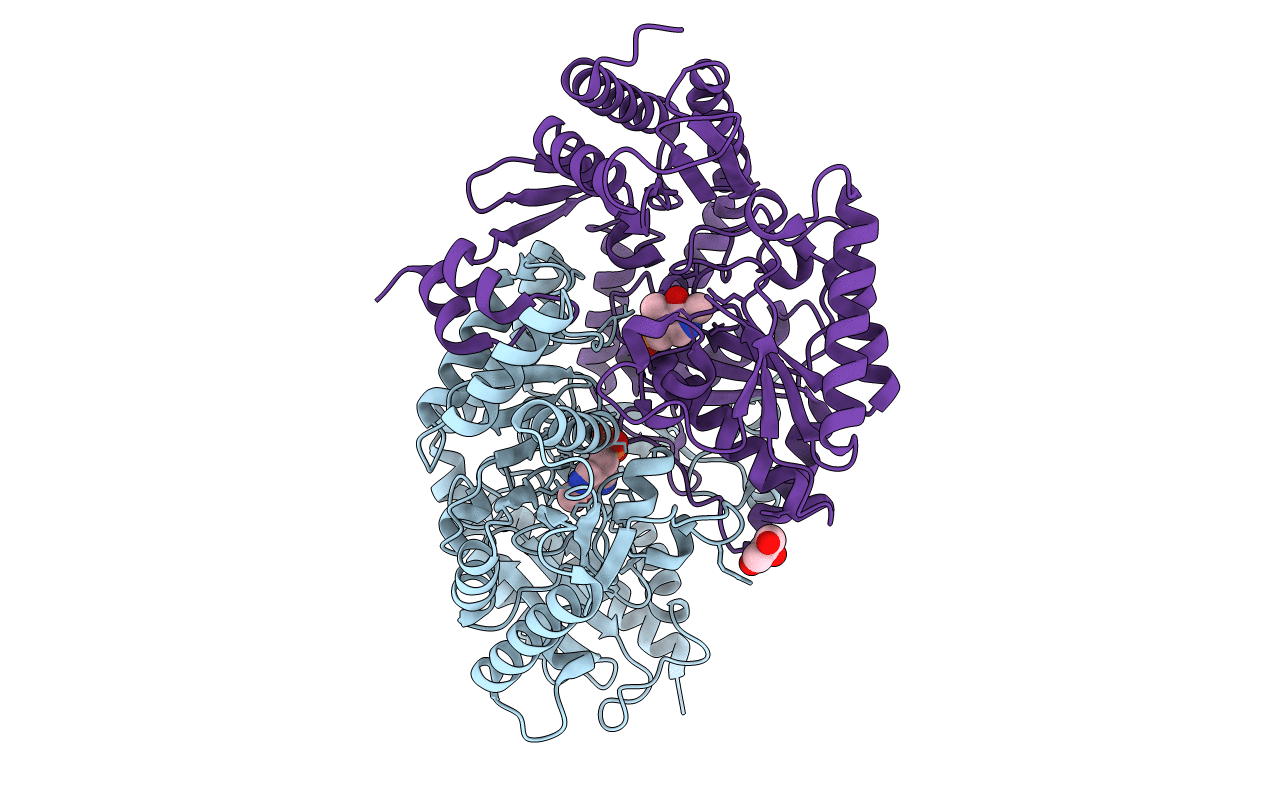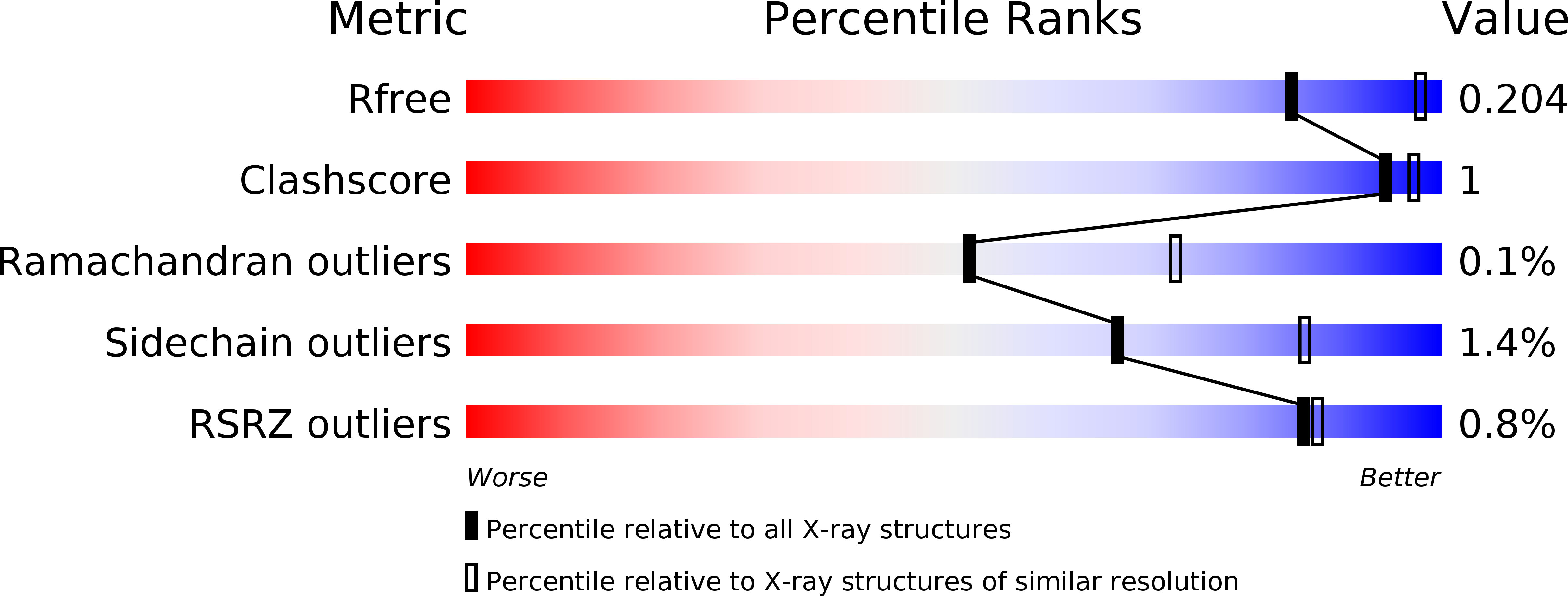
Deposition Date
2018-03-27
Release Date
2019-04-10
Last Version Date
2024-05-01
Entry Detail
PDB ID:
6G4F
Keywords:
Title:
Crystal structure of the omega TRANSAMINASE FROM PSEUDOMONAS Jessenii in complex with PMP
Biological Source:
Source Organism:
Pseudomonas sp (Taxon ID: 306)
Host Organism:
Method Details:
Experimental Method:
Resolution:
2.50 Å
R-Value Free:
0.20
R-Value Work:
0.15
R-Value Observed:
0.16
Space Group:
P 43


